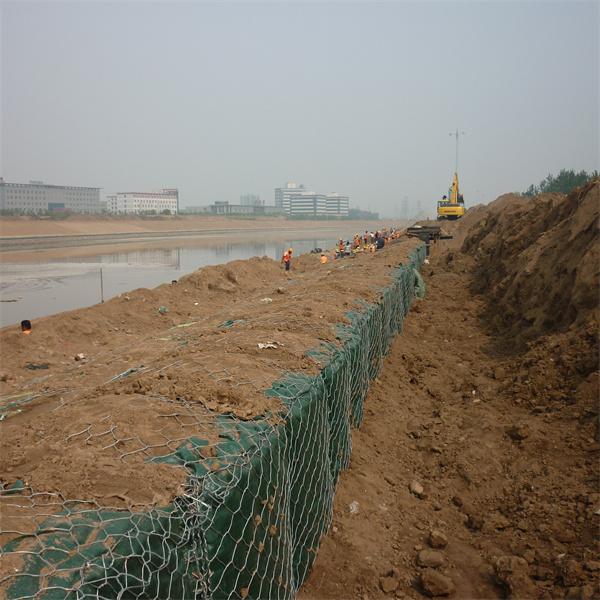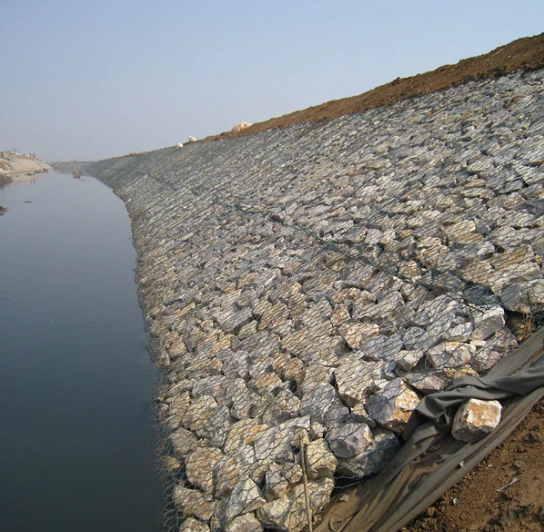មករា . 13, 2025 13:14 Back to list
gabion fences
Gabion fences have been gaining traction in modern landscaping and construction due to their unique blend of natural aesthetics, robust functionality, and environmental friendliness. A gabion is essentially a robust steel wire cage or box filled with rocks, stones, or sometimes crushed concrete. Emerging from their traditional roots in civil engineering projects, such as road building and erosion control, gabion fences are now being lauded as stylish and practical elements for both urban and suburban residential properties.
The installation process of gabion fences is another facet contributing to their rising popularity. Unlike conventional fences requiring deep post holes and concrete footings, gabion fences lie directly on the ground, relying on their weight for stability. This not only speeds up the installation process but also mitigates potential damage to existing vegetation or underground utilities. As labor costs and time are major considerations in most projects, the ease and efficiency of setting up a gabion fence become significant advantages. Functionally, gabion fences provide more than just boundary marking. They can act as noise barriers, making them an excellent choice for properties near busy roads or railways. Their dense composition and mass help diffuse and absorb sound, contributing to a quieter environment. Additionally, they offer exceptional privacy without the stark imposition of traditional solid walls, simultaneously providing openness through the spaces between rocks and stones. Safety is another area where gabion fences excel. The structure's inherent stability ensures it stands firm against potentially high winds or accidental impact. For areas prone to flooding, the permeable nature of gabions allows water to pass through, reducing pressure buildup and the risk of structural failure. This makes them an optimal choice for regions experiencing extreme weather conditions. In conclusion, gabion fences present a multifaceted solution catering to aesthetic preference, practical function, and environmental responsibility. Their ability to combine durability with design flexibility, along with ease of installation and maintenance, positions them as a forward-thinking choice for modern fencing projects. As awareness of their benefits continues to spread, it is anticipated that gabion fences will increasingly feature in both residential and commercial landscapes, underscoring a trend toward more sustainable and aesthetically pleasing forms of construction.


The installation process of gabion fences is another facet contributing to their rising popularity. Unlike conventional fences requiring deep post holes and concrete footings, gabion fences lie directly on the ground, relying on their weight for stability. This not only speeds up the installation process but also mitigates potential damage to existing vegetation or underground utilities. As labor costs and time are major considerations in most projects, the ease and efficiency of setting up a gabion fence become significant advantages. Functionally, gabion fences provide more than just boundary marking. They can act as noise barriers, making them an excellent choice for properties near busy roads or railways. Their dense composition and mass help diffuse and absorb sound, contributing to a quieter environment. Additionally, they offer exceptional privacy without the stark imposition of traditional solid walls, simultaneously providing openness through the spaces between rocks and stones. Safety is another area where gabion fences excel. The structure's inherent stability ensures it stands firm against potentially high winds or accidental impact. For areas prone to flooding, the permeable nature of gabions allows water to pass through, reducing pressure buildup and the risk of structural failure. This makes them an optimal choice for regions experiencing extreme weather conditions. In conclusion, gabion fences present a multifaceted solution catering to aesthetic preference, practical function, and environmental responsibility. Their ability to combine durability with design flexibility, along with ease of installation and maintenance, positions them as a forward-thinking choice for modern fencing projects. As awareness of their benefits continues to spread, it is anticipated that gabion fences will increasingly feature in both residential and commercial landscapes, underscoring a trend toward more sustainable and aesthetically pleasing forms of construction.
Next:
Latest news
-
Wire Mesh Thickness Impact on Gabion Wall Load Bearing
NewsAug.12,2025
-
Ultimate Guide to Hexagonal Gabion Box
NewsAug.12,2025
-
Types of Rocks for Gabion Baskets Durability and Aesthetics
NewsAug.12,2025
-
Standard Gabion Box Sizes and Their Industrial Applications
NewsAug.12,2025
-
Easy Guide to Building Garden Gabion Cages at Home
NewsAug.12,2025
-
Drainage Solutions for Gabion Mesh Structures
NewsAug.12,2025
-
Visualizing Gabion 3D Integration in Urban Landscapes with Rendering
NewsJul.23,2025
Manufacturer of Silk Screen Products
QuanhuaProvide high-quality products and services to global customers.






